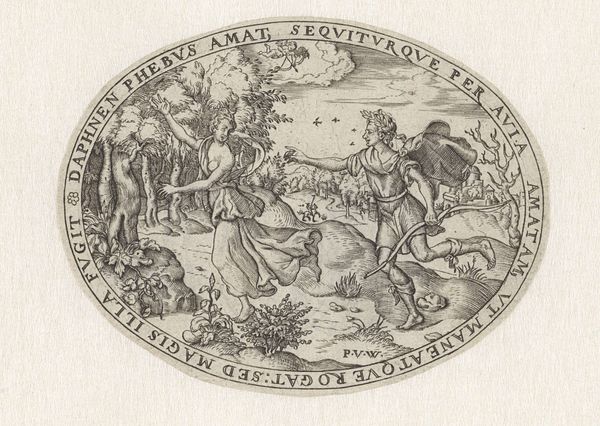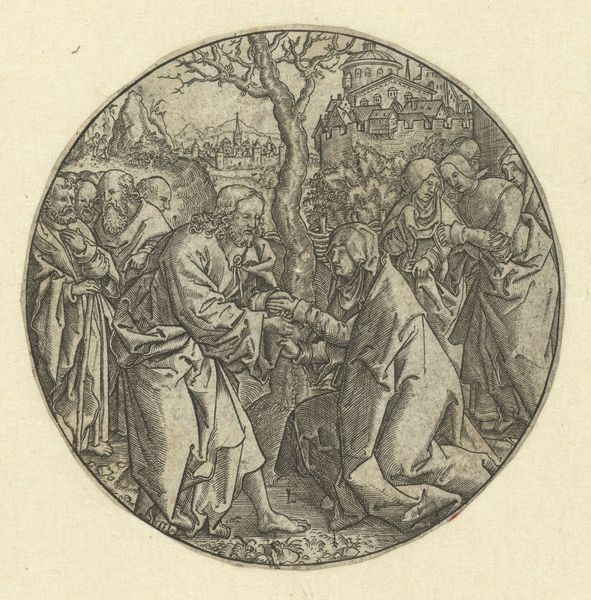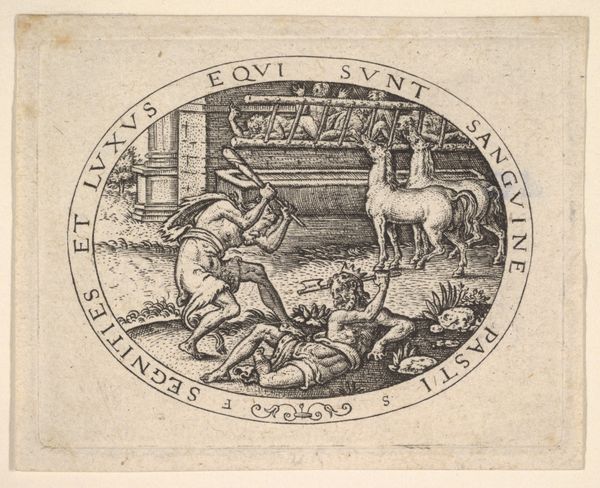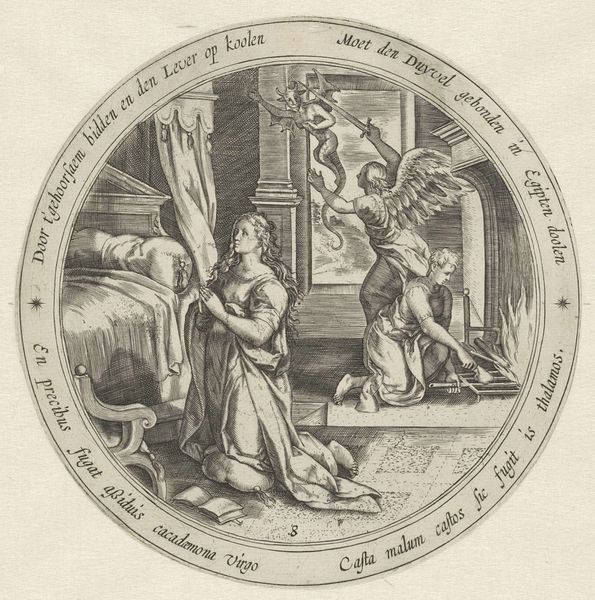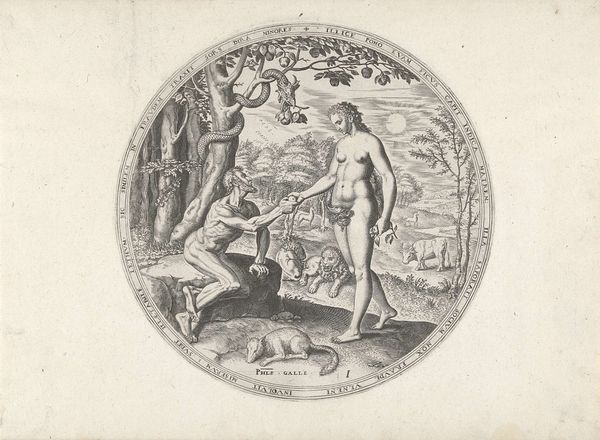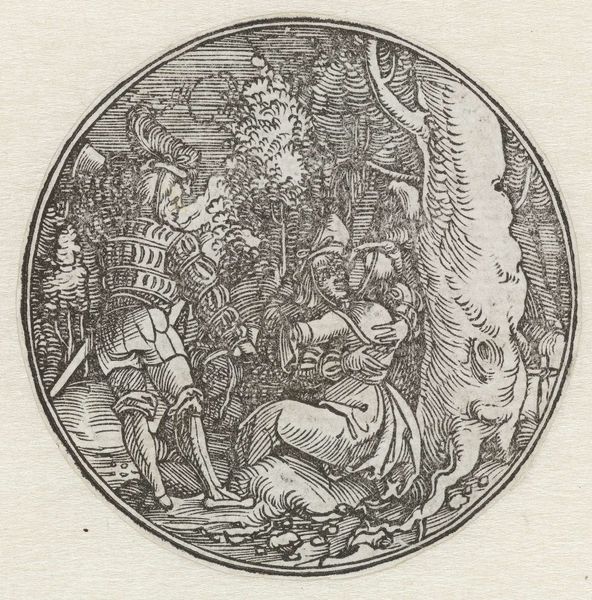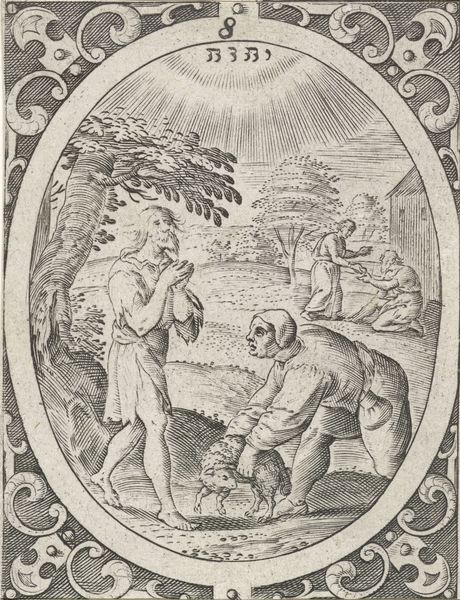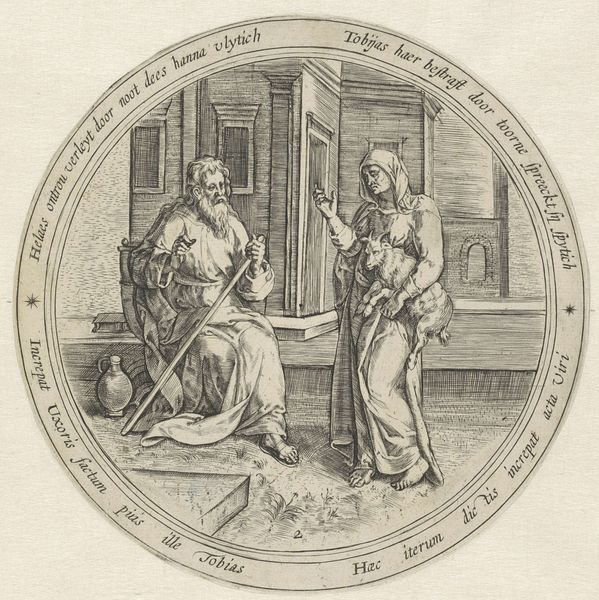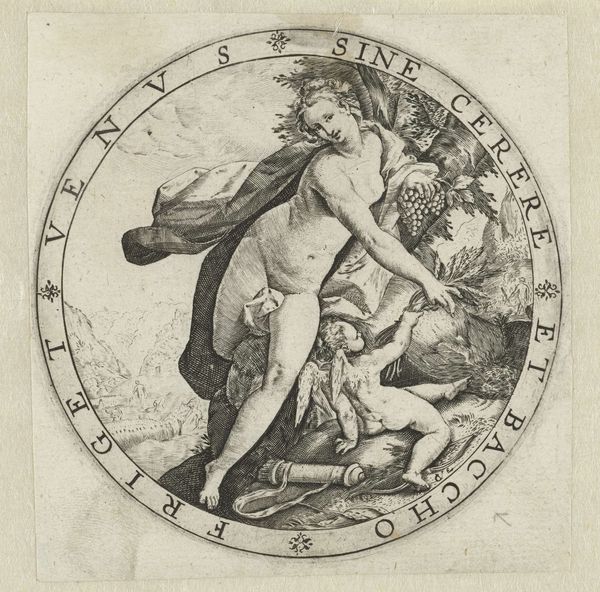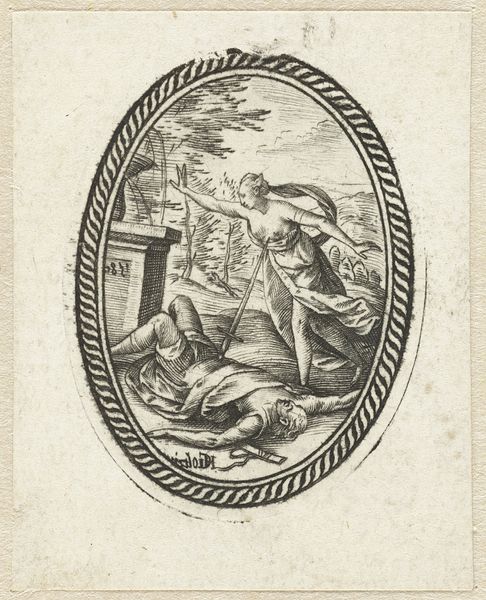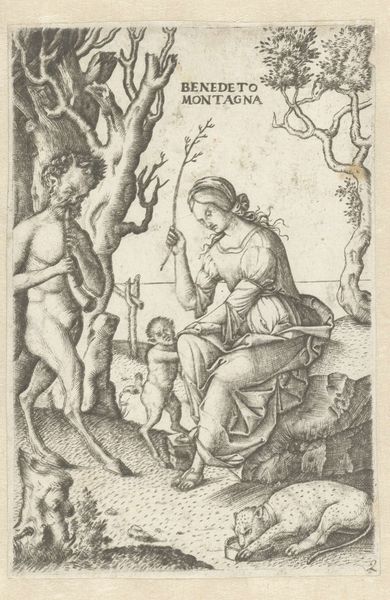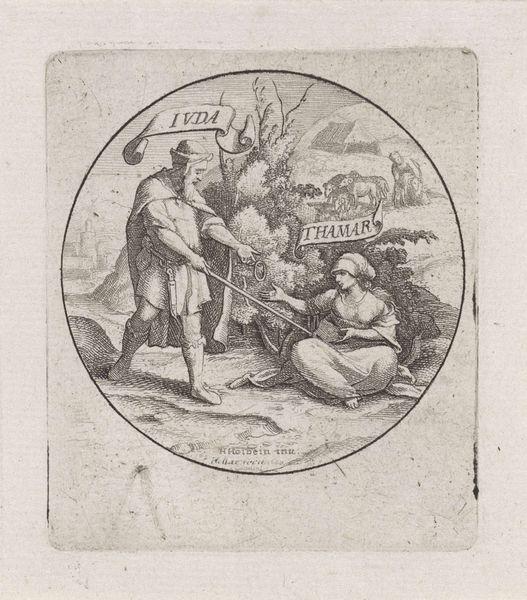
print, engraving
#
narrative-art
#
baroque
# print
#
old engraving style
#
figuration
#
history-painting
#
engraving
Copyright: Rijks Museum: Open Domain
Curator: What strikes me first is the immediate sense of potential this image seems to hold, almost like a secret about to be revealed. Editor: Let’s delve into the particulars of this print, entitled "Tobias vangt de vis," created sometime between 1601 and 1652 by an anonymous artist. It's currently held at the Rijksmuseum, and the medium is engraving. The clear lines of this work exemplify baroque aesthetics, while portraying the narrative of Tobias catching the fish. Curator: Yes, and I want to highlight how the composition reinforces its narrative themes, particularly relating to religious dogma. It reflects prevailing notions of the family’s status relative to forces beyond them – celestial intervention being paramount. Look at how that circular framing encapsulates a very fixed, theological perspective. The presence of angels almost seems more earthly or, dare I say, attainable given their immediate proximity and attire. Editor: Exactly. And note the physicality of it – the tangible pressure of the metal plate, the marks incised into it. You get a sense of a workshop, of a practice being developed, and of material limitations requiring the reduction of narrative into streamlined marks, an aesthetic and practical economy. It highlights labor conditions of production at the time – perhaps contributing, through reproducibility, to new accessible formats. Curator: The way Tobias interacts directly with the fish suggests a tangible struggle that then mirrors socio-political struggles – issues surrounding poverty, inequality, religious conviction... It’s really thought-provoking. How are such material struggles presented or, more precisely, mediated and received by various viewers. Editor: Indeed! By understanding the engraving not just as an artwork, but as a crafted object, we understand more completely the means of artistic production. We’re forced to consider questions surrounding authorship and reception too. The circulation and consumption of images such as these, their sheer materiality – so vital for understanding visual culture of this era. Curator: It truly makes one contemplate how this era understood complex social narratives of gender, and identity... Editor: Yes. From the physical processes of artistic production to the narratives represented, engaging with these tangible elements of "Tobias vangt de vis" allows us a deeper insight into this artwork's existence as part of the history.
Comments
No comments
Be the first to comment and join the conversation on the ultimate creative platform.

